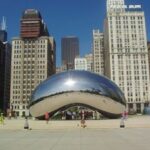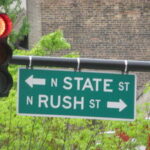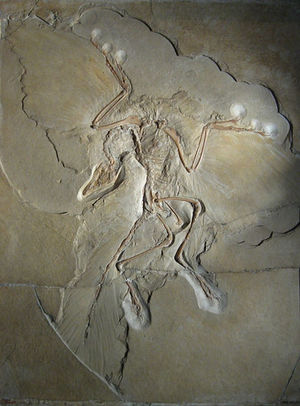In early fall 1982 seven murders took place in and around the Chicago area that ended up having far-reaching effects on the rest of the country. These murders threatened not only the lives of nearly everyone but also the financial future of one of the largest corporations in the country. It also instilled fear and mistrust in most of the world of consumers and it radically changed the way in which consumers viewed products and bought them. Many have said that whatever innocence consumers may have had in 1982 was lost by the time fall ended that same year.
The whole event started on September 29, 1982 in Elk Grove Village Illinois, a suburb of Chicago located just west of O’Hare airport. It was just before dawn, still dark, the sun still a few hours away in the Kellerman household. Mary Kellerman awoke to find her throat sore and her nose runny. She felt sick and she walked into her parent’s room to tell them she wasn’t feeling well. Her parents awoke, felt her forehead, and then went off to give her something for her fever. She was given one Extra-Strength Tylenol capsule.
At 7 a.m. Mary’s parents awoke and found her on the floor of the bathroom. The called the paramedics and Mary was rushed to the hospital. She was pronounced dead and the doctors originally thought her death may have been because of a stroke or something natural. No one had any reason to suspect foul play at this point.
Later that same day a man named Adam Janus called the paramedics. Janus was a resident of another Chicago suburbs called Arlington Heights. He was in great distress and by the time the paramedics arrived he too was collapsed on the floor with his breathing labored and his blood pressure life-threateningly low. Janus was rushed to the hospital and the doctor’s worked on him feverishly. His pupils were fixed and dilated. He was pronounced dead shortly after arriving in the ER. Given his symptoms and with still no idea bout tainted capsules the doctors theorized he must have died from a heart attack. Sadly, the tragedy of the Janus family was only beginning.
That evening Janus’ family gathered at his home to discuss funeral arrangements. Janus’s brother and his bother’s new bride both complained of having headaches. The stress of having lost a family member appeared to be too much for them. Janus’ brother wandered into the kitchen where he found a bottle of Extra-Strength Tylenol. He took one of the capsules and gave one to his wife. In mere minutes both the wife and brother were on the floor. The other family members called an ambulance and they were both rushed to the hospital. Janus’ brother was declared dead minutes after entering the hospital. His wife died two days later.
This time people got suspicious. At first theories abounded that gas may be leaking somewhere within the Janus home. A Dr. Kim at Northwest Community Hospital, where all three family members had been taken, consulted with a John B. Sullivan at the Rocky Mountain Poison Center to discuss the effects of poison gases. As the two men discussed the case Sullivan stated the symptoms sounded more like cyanide poisoning than anything else. Kim ordered blood samples taken from the deceased and sent to the lab for testing.
As Dr. Kim was waiting for the results of his lab tests two firemen were discussing the strange cases that they had heard about in the area of people suddenly dropping dead on the floor. Of particular interest was the Janus family. One firefighter, Phillip Cappitelli, from the Arlington Heights fire department, was discussing the Janus case with a friend, Richard Keyworth, from the Elk Grove Village fire department, about the cases. Keyworth was familiar with the Kellerman incident. Keyworth mentioned that Mary Kellerman’s parents had informed the paramedics that Mary had complained of cold symptoms but had only taken some Extra-Stength Tylenol. Cappitelli made a phone call to the paramedics who had taken the Janus’ to the hospital and asked if Extra-Strength Tylenol had been found on the premises there as well. The two firemen were surprised to find that it had been found there.
The next call was to the police department. The bottles at both the Kellerman and Janus homes were taken by the police for testing. The next morning both the labs from Dr. Kim and the tests on the capsules taken by police were confirmed. The Cook County chief toxicologist, Michael Shaffer, had discovered that each bottle contained capsules that had been emptied and refilled with about 65 milligrams of cyanide. The blood tests backed up this find by confirming the victim’s blood was filled with deadly cyanide. Johnson and Johnson, the parent company of McNeil Consumer Products, the makers of Extra-Strength Tylenol, were contacted. A massive recall of product was ordered, almost immediately, by the company. Warnings were also sent to doctors, hospitals and wholesalers of the potential danger with the product. This did not stop people who had already purchased tainted bottles, however.
Mary Reiner was twenty-seven years old and lived in Winfield Illinois, another suburb of Chicago. She had just given birth to her son and was still recovering. She took some Extra-Strength Tylenol to help with the pain. She was dead a few hours later. Paula Prince, a thirty-five-year-old flight attendant with United Airlines was found dead in her apartment. The police found tainted capsules in her apartment. The seventh victim was thirty-five-year-old Mary McFarland of Elmhurst.
The news story hit the national news shortly after McFarland died. The city of Chicago went into a panic. The entire country also panicked. In order to stop citizens from taking Tylenol the suburban police drove through the Chicago area using loudspeakers to warn them of taking Tylenol products. The public began throwing out their bottles of Tylenol regardless of the actual brand.
Area hospitals were flooded with phone calls. People became convinced that every ache and pain was somehow connected to cyanide poisoning. The head of the Seattle Poison Control Center made a statement informing the public that, had they actually been victims of cyanide poisoning, the poison would act so fast they would be unlikely to even be able to reach the phone to call anyone. Many states throughout the country banned outright the sale of any Tylenol products until further notice. Retailers across the country began removing Tylenol from their shelves and disposing of them and refused to put any more on the shelves until answers came.
The serial numbers of the bottles that had been found in the victim’s homes was released. The FDA stated that it appeared only products containing that that lot number was of any real concern. However, most stores, due to concern from the public still decided to remove all Tylenol products all-together.
Johnson and Johnson issued statements confirming the recall which ended up costing the company $125 million. They also set up a nationwide hotline for people to receive current information and find out about safety measures. They also announced that the facilities where the poisoned lots had been made were being checked to see if the poison had someone entered the product in production. It was ultimately determined that this was not the case. This meant the poisonings were not an accident. The FBI, FDA and local law enforcement agencies joined forces and established task forces to try and track down the person who had deliberately tainted the pills.
The problem for investigators was that there was no evidence. There were no witnesses. The bottles of the victims had been handled by too many people to provide prints. There was also still the fear of tainted bottles still being in the public domain. The hotlines and task forces were flooded with calls from people concerned that medication they had in their homes was tainted. Also, of course, there was nothing stopping the “Tylenol Terrorist” from tainting more products if he so desired.
In early October 1982 another tainted bottle was discovered by police as they checked bottles removed from local shelves. Johnson and Johnson issued a $1,000 reward for information leading to the apprehension of the criminal who had done this. Authorities had no way of knowing how many other bottles were tampered with and they were worried that the terrorist may have tampered with products beyond Tylenol.
Six Chicago-based stores were discovered to contain the tampered capsules. The Jewel Foods store in Arlington Heights, the Jewel Foods in Grove Village, Walgreens in Chicago and Frank’s Finer Foods in Winfield were the outlets named as having the tainted bottles on their shelves. Each store was found to have at least one tampered bottle and within that bottle were three to ten tampered capsules. The one exception was an Osco Drug that had two bottles found to contain cyanide-laced capsules.
Authorities struggled to find patterns within this crime. Some believed that the placements were entirely random. Still other officials believed that the locations were in a pattern meant to be discovered. Some theories were that the perpetrator had a grudge against one or more of the store chains. Some thought he might have a grudge against Johnson and Johnson. Some felt that maybe he lived near or within a short distance of the semi-circle of stores where tainted bottles were found.
More clues began to emerge. Tests revealed the exact poison used was potassium-cyanide. This type of poison is available to those who work in industries like gold and silver mining, fertilizer production, steel plating, film processing and chemical manufacturing. This brought up the theory that the terrorist may be working within one of those industries.
About a month after the first killings the investigators took someone into custody. He was a 48-year-old dockhand and amateur chemist. He worked for a company that supplied Tylenol to at least two of the stores where tainted bottles had been found. Under questioning the suspect admitted to having access to cyanide. Investigators also revealed that a search of his apartment found weapons of all sizes and shapes, two one-way tickets to Thailand, and a book that had instructions on how to stuff poison in to capsules as a method for murder.
Despite this evidence there was nothing to specifically link him to any of the tainted bottles. Lacking this connection they could not charge him with murder in any of the deaths due to poisoning. He was charged with illegal possession of firearms and eventually released on bond. No sooner did this suspect vanish back into the distance when a new suspect suddenly emerged.
Johnson and Johnson received a handwritten letter demanding $1 million for the end of the poisonings. The letter-writer demanded that the company respond to his demands by putting some kind of ad or article in the Chicago Tribune. The corporation went to the authorities instead. The authorities were able to trace the letters to a man named James W. Lewis. Lewis seemed to fit the profile. He was a known con artist and was wanted in connection with a murder and jewel robbery in Kansas City. A warrant was immediately issued for his arrest.
The FBI and Illinois Law Enforcement agencies began tracing the last known locations of Lewis and his wife LeAnn. This chase led them across Illinois, Missouri, Kansas and Texas. The agencies began plastering posters and pictures of the couple all over the country.
Meanwhile tests continued on the bottles taken off of store shelved in the Chicago area. One bottle was found to contain poison and was found in a store very close to where Paula Prince had purchased her bottle of tainted pills. This bottle was checked for fingerprints and other hair and fiber clues. They came up empty.
A letter arrived in the offices of the Chicago Tribune from someone named Robert Richardson stating that he and his wife had nothing to do with the poisonings. Robert Richardson was a known alias of Lewis. This letter was traced to New York City. The search for Lewis began to concentrate there. Libraries and police stations were notified and sent pictures of the two suspects.
Johnson and Johnson, by November, announced that they would be re-introducing the products that had been recalled to the market. They announced that the products would now be packaged in new tamper-resistant, triple-sealed packaging. They also announced they would release $2.50 coupon towards the purchase of any Tylenol product. The business world held its breath and wondered whether or not consumer confidence would be restored of if one of the largest corporations in the world would suffer financial collapse. To everyone’s surprise consumer confidence was restored. In under two months the company had regained 98 percent of the market share they had lost due to the murders.
The FBI received a tip from a librarian in New York who said she recognized Lewis from the pictures that had been sent of Lewis and his wife. The FBI and surrounded the reading room of the New York Public Library. Lewis was arrested without a struggle and underwent questioning. The following week his spouse, LeAnn Lewis, turned herself in to Chicago police.
Despite handwriting analysis that seemed to show the extortion letters were written by Lewis he and his wife denied having anything to do with the letters or the poisonings. An article in Newsweek then stated a second extortion letter was found at the White House telling the President that a bomb would be placed at the White House and more poisonings would occur unless President Reagan changed his tax policies. Lewis also denied writing this letter even though there was evidence to suggest he had.
Beyond the letters law enforcement could not find any other evidence to connect the Lewises to the Tylenol poisonings. Further investigations showed that the Lewises were staying in a hotel in New York when the bottles would have been tampered with. Further investigations showed LeAnn Lewis had been at her regular job in New York during the time when the poisoner would have been tampering with and placing the tampered bottles in the Chicago area. The law enforcement officials also could not find any evidence that the Lewises had been in Chicago at any time during the poisonings. The Lewises were ultimately charged and found guilty of extortion and credit card fraud and were sentenced to 20 years in prison. The FBI was forced to admit that the Tylenol Terrorist was still on the loose.
The FBI released what they believed was an accurate profile of the killer. The Tylenol Terrorist was l likely male and a loner. It was also believed that he was likely to have received treatment for some kind of extreme mental disorder like depression or anger-control problems. He may have spent time complaining about society or feelings of wrongdoings committed by society against him. He may have even reached out to people of power or influence to express his feelings of injustice and perhaps felt that he was not taken seriously which only fueled his anger toward society. He was also likely to be living in and around the Chicago area. He probably owned a car or truck due to the distances between the stores where the poisoned capsules were found.
The capsules were not very well hidden. Most of the capsules with poison bulged or were deformed. However, the victims simply never noticed. It was suggested that the killer was rather incompetent but had feelings of superiority. He was probably not particularly intelligent. Also, the killer may have worked in a profession that had easy access to cyanide. Finally it was suggested the killer had a menial job with very low wages. Whether or not this profile is of any help is something still open to debate.
While the search continued for the man who poisoned capsules in Chicago a couple of notorious copycats emerged and continued to foster the fear throughout the nation. Congress passed a law that made product tampering a federal offense. The FDA created requirements for over-the-counter medications and required that they be made tamper-resistant. Law enforcement agencies across the country were flooded with reports of products been tampered with.
In 1986 a woman by the name of Stella Nickell was arrested and convicted of killing her spouse using poisoned Excedrin tablets. She had grown bored with their relationship and had taken out huge insurance policies on him. If she was able to prove that his death was unnatural she stood to gain even greater amounts of money. Nickel evidently tried to make it look like he had been a victim of a random poisoner and not only tampered with medication her spouse took but put tampered pills in several stores. A woman by the name of Sue Snow died from taking tampered pills. Nickell was convicted and sentenced to 90 years in prison.
In 1991 another tampering scheme was discovered. This time it was tainted Sudafed. A man named Joseph Meling was convicted of attempting to kill his wife with the tampered tablets. Once again Meling had taken out a large policy on his wife and had attempted to make her death look like part of random poisonings. At least two people died from taking tampered tablets while Meling’s wife actually survived the attempt on her life.
As for the person who murdered seven people in the Chicago area no suspect has ever been caught and charged. The reward offered by Johnson and Johnson is still unclaimed. All leads have long since grown cold and no further evidence has ever been produced. However, as advances in crime detection occur there is always the chance some new evidence can be found or perhaps that someone may come forward who knows something. After all, it took years before a relative of the Unabomber can forward to identify him.
While the murders remain unsolved the impact of the murders continues to this day. The way in which food and medication is packaged changed after this incident. Anyone who has ever struggled with the plastic seal around a bottle of aspirin has experienced, first-hand, the radical changes that were instituted in packaging the foods and medicine we take to this day.







